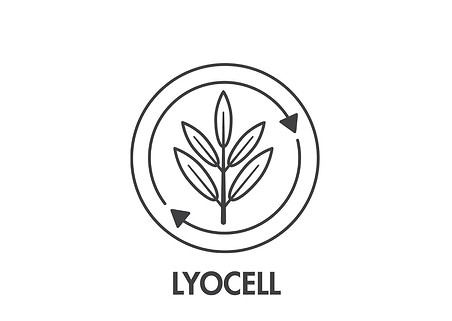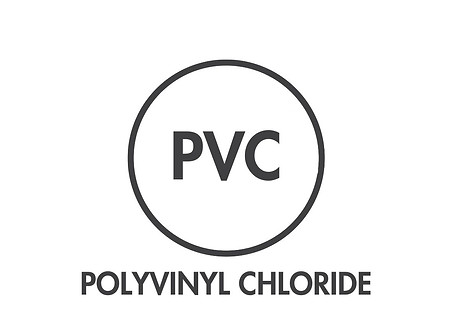It's All About the Fabric
Have you ever stopped to think about the fabric behind your workwear? While some people prefer the classic comfort of 100% cotton, others are open to innovative blends and modern technologies. With new developments appearing all the time, it can be difficult to keep track of what’s what. This guide introduces the key fabrics and terms used across our ranges, helping you better understand the materials that go into your clothing.

Cotton
Cotton is a natural fibre harvested from the seed hairs of the cotton plant and has long been a staple in clothing. Soft, breathable and durable, it’s ideal for chef jackets, offering comfort during long shifts and withstanding frequent high-temperature washes.
However, cotton does have downsides: it wrinkles easily, dries slowly, and is less stain-resistant than modern fabrics.

Poly-Cotton Blends
Polycotton blends combine natural cotton with synthetic polyester which also includes rPET, aiming to get the best of both worlds.
The cotton content keeps the fabric soft, breathable and comfortable, while polyester adds strength, wrinkle resistance and quicker drying. This makes polycotton popular in workwear, especially chef jackets, where durability and comfort are equally important.
The balance of fibres varies, with higher cotton blends (often referred to as cotton-poly) feeling more natural whereas higher polyester blends offering extra resilience (poly-cotton).

Lyocell
Lyocell is a modern fibre made from wood pulp. The wood is usually sourced from sustainably managed eucalyptus, beech or spruce trees. It is often referred to by the brand name TENCEL™ (other brands available).
Processed in a closed-loop system where water and solvents are almost entirely recycled, Lyocell is one of the more eco-friendly fabrics available.
Soft, breathable and highly absorbent, it is comfortable to wear and helps regulate temperature, making it a strong alternative to cotton in workwear. It’s also smooth, durable and resists wrinkling.

Leather
Leather is a durable material made from animal hides, most commonly cowhide, that has been treated through tanning to preserve and strengthen it.
Known for its toughness, flexibility and long lifespan, leather has been used in workwear for centuries, particularly in protective garments like aprons, gloves and footwear. It resists heat, abrasion and punctures better than many textiles, making it ideal for heavy-duty environments. However, leather is heavier and less breathable than fabric alternatives, and requires regular care to prevent cracking or stiffness.
For those that do not wish to wear leather due to ethical concerns, beliefs or other reasons there are many products now available in Faux Leather sector.

Microfibre
Microfibre is a synthetic fabric made from extremely fine polyester or polyamide (nylon) fibres, woven to create a lightweight yet strong material.
Its dense structure makes it soft to the touch, quick-drying, and highly effective at wicking away moisture—qualities that are useful in active workwear and chef jackets where comfort and cleanliness are key.
Microfibre is also naturally stain-resistant, fade resistant and easy to wash, keeping garments looking fresh for longer.

Polyurethane (PU)
Polyurethane (PU) is a versatile synthetic material used widely in coatings, foams, and textiles.
In workwear, PU is often applied as a coating to fabrics, making them water-resistant, lightweight and flexible without losing comfort. It’s commonly found in rainwear, protective gloves, and as the base for many faux leathers.
PU is tough, easy to wipe clean, and can provide a sleek finish at a lower cost than natural alternatives.

Polyester
Polyester is a synthetic fibre made from petroleum-based polymers and is now one of the most common fabrics in clothing and workwear. Lightweight, strong, quick-drying and highly resistant to shrinking, stretching and wrinkles—qualities that make it practical for busy kitchens and demanding work environments.
Unlike cotton, polyester is less breathable, which can make it feel warmer during long shifts, but it excels in durability and stain resistance.

Recycled Polyester
Recycled polyester (rPET) is made by reprocessing plastic waste—such as plastic bottles, food containers or discarded textiles—into new fibres, offering the strength and practicality of traditional polyester with a lighter environmental footprint.
It’s durable, quick-drying, wrinkle-resistant and easy to care for, making it well-suited to workwear and chef jackets. While it shares polyester’s drawback of being less breathable than natural fibres, recycled polyester reduces reliance on virgin petroleum and diverts plastic from landfill.

Elastane
Elastane, also known as spandex or Lycra, is a synthetic fibre prized for its exceptional stretch and recovery.
Added in small amounts to fabrics, it gives workwear greater flexibility, freedom of movement and a closer fit without losing shape.
In chef jackets and uniforms, elastane helps garments stay comfortable during long, active shifts, allowing ease of motion in busy environments.
On its own elastane is lightweight and smooth, but it’s almost always blended with other fibres like cotton or polyester.

Faux Leather
Faux leather, also called synthetic leather, is made from a fabric base coated with plastic—usually polyurethane (PU) or polyvinyl chloride (PVC)—to mimic the look and feel of real leather.
It offers many of the same benefits: durability, water resistance, and an easy-to-clean surface, often at a lower cost. Because it avoids animal products, it’s considered a more ethical alternative, and newer plant-based versions made from materials like cactus or apple waste are emerging.
However, traditional faux leather is less breathable, can crack or peel over time, and its plastic content raises environmental concerns around sustainability and microplastic waste.

Graphene
Graphene is a cutting-edge material made from a single layer of carbon atoms arranged in a honeycomb structure, known for being incredibly strong, lightweight and conductive.
When applied to textiles, graphene can enhance durability, improve thermal regulation by conducting heat evenly, and even add antibacterial properties.
In workwear, it shows promise for creating garments that are tough yet breathable, helping keep wearers cooler in heat and warmer in cold.

Polyvinyl Chloride
Polyvinyl chloride (PVC) is a synthetic plastic widely used in coatings, footwear, gloves and faux leather.
In workwear, it provides excellent water resistance, durability and protection against chemicals, making it suitable for aprons, rainwear and safety boots.
PVC is strong, easy to clean and relatively inexpensive, giving it an edge in heavy-duty environments where protection matters most.
